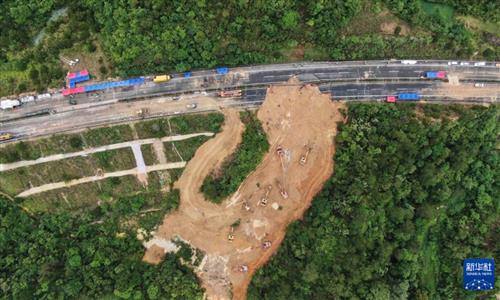
Photo: Screenshot from website
The south gate wall of Dapeng Fortress, a Ming Dynasty (1368-1644) walled village in Shenzhen, South China's Guangdong Province, recently collapsed.
The news was recently announced by the general office of the site in the city's Dapeng New District. On its official WeChat account, the general office explained that the main cause of the incident was "the continuous heavy rain in recent days."
The collapse occurred on Saturday and was "small scale," according to the general office's statement, which noted that no casualties were found after the investigation.
Safety barriers have been installed around the collapsed area, and experts in fields such as cultural relics and emergency response have also been organized into teams to further assess the site.
Historian Fang Gang told the Global Times that the Dapeng Fortress, also known as Dapeng Suocheng, was once a coastal defense structure during the Ming and Qing (1644-1911) dynasties.
"One of the most well-preserved coastal military defense sites in China, it witnessed critical historical events such as the first Opium War [1840-42]," Fang noted.
Although small in scale, the recently collapsed section extends to the Dapeng Fortress's south gate. A staff member of the Dapeng Ancient City Museum told media that the extended wall area has been rebuilt in 1984.
In 2001, the Dapeng Fortress was made a national-level key cultural relic site. Two years later, it became a pilot village exhibiting China's cultural history.
"Recovery tasks may involve thorough examinations into whether the collapse poses a threat to the entire building's stability. Also, a conservative plan should be introduced to brace the old architecture," Zheng Huaxin, an expert of ancient architecture, told the Global Times.
The expert also emphasized that extreme weather and severe natural conditions always pose a threat to ancient sites.
In 202,1 prior to the Shenzhen incident, heavy rain in North China's Shanxi Province damaged a total of 1,763 ancient ruins in the province, including the notable Pingyao Ancient City.
"Leaks and collapses are the two most common and severe damage to such relics," Zheng told the Global Times.
The Dapeng Fortress is currently closed for repairs.



